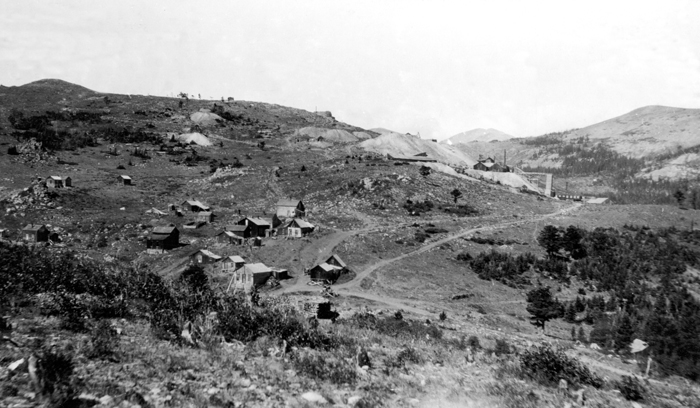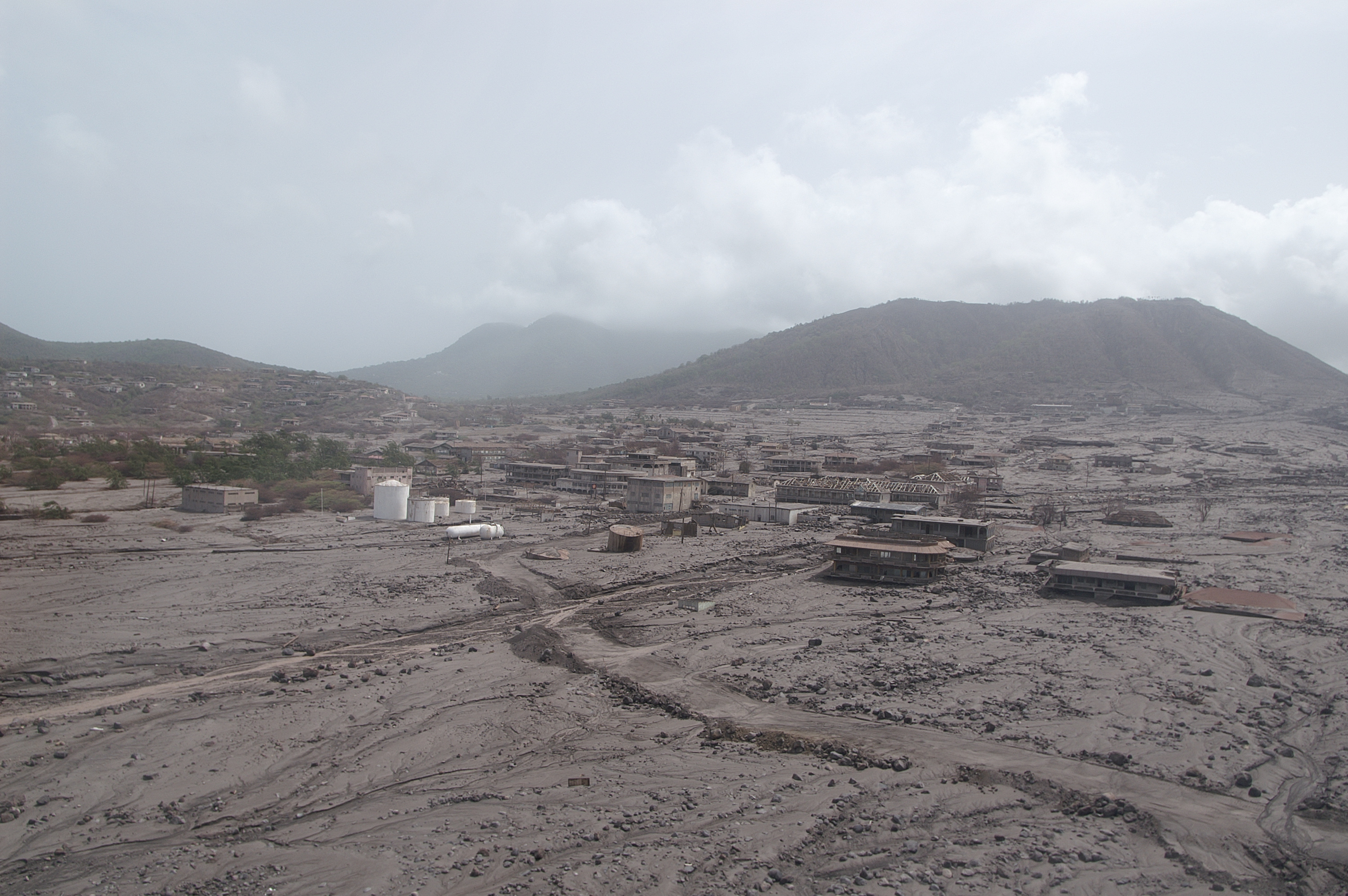|
Caribou, Colorado
Caribou is an extinct silver mining town located near Nederland in Boulder County, Colorado, United States. It was named after the nearby Caribou silver mine. The unincorporated community of Caribou City and the former Caribou Ranch recording studio are located east of the ghost town. History 1861 to 1969 A prospector named Conger discovered placer gold downstream from Caribou in 1861. He eventually followed the gold up Coon Trail Creek, and discovered the first silver vein in what later became the Caribou district. Caribou was established about 1870 to house miners from the Caribou silver mine.Voynick, S.M., 1992, Colorado Gold, Missoula: Mountain Press Publishing Company, The Caribou, Colorado, post office operated from January 31, 1871, until March 31, 1917. The town had one church, three saloons, a brewery, and its own newspaper, the Caribou ''Post''. The Caribou mine was sold for $3 million in 1871 to Dutch investors, but the new owners found that the best ore ha ... [...More Info...] [...Related Items...] OR: [Wikipedia] [Google] [Baidu] |
Ghost Town
A ghost town, deserted city, extinct town, or abandoned city is an abandoned settlement, usually one that contains substantial visible remaining buildings and infrastructure such as roads. A town often becomes a ghost town because the economic activity that supported it (usually industrial or agricultural) has failed or ended for any reason (e.g. a host ore deposit exhausted by mining). The town may have also declined because of natural or human-caused disasters such as floods, prolonged Drought, droughts, extreme heat or extreme cold, government actions, uncontrolled lawlessness, war, pollution, or nuclear and radiation accidents and incidents, nuclear and radiation-related accidents and incidents. The term can sometimes refer to cities, towns, and neighborhoods that, though still populated, are significantly less so than in past years; for example, those affected by high levels of unemployment and dereliction. Some ghost towns, especially those that preserve period-specific ... [...More Info...] [...Related Items...] OR: [Wikipedia] [Google] [Baidu] |
Colorado Railroad Museum
The Colorado Railroad Museum is a non-profit railway museum, railroad museum. The museum is located along the former Colorado and Southern Railway line on at a point where Clear Creek (Colorado), Clear Creek flows between North and South Table Mountains in Golden, Colorado, Golden, Colorado. The museum was established in 1959 to preserve a record of Colorado's flamboyant railroad era, particularly the state's pioneering Narrow-gauge railway, narrow-gauge mountain railroads. Facilities The museum building is a replica of an 1880s-style Train station, railroad depot. Exhibits feature original photographs by pioneer photographers such as William Henry Jackson and Louis Charles McClure, as well as paintings by Howard L Fogg, Otto Kuhler, Ted Rose and other artists. Locomotives and railroad cars modeled in the 1:12 scale, one inch scale by Herb Votaw are also displayed. A bay window contains a reconstructed depot telegrapher's office, complete with a working telegraph sounder. T ... [...More Info...] [...Related Items...] OR: [Wikipedia] [Google] [Baidu] |
Former Populated Places In Boulder County, Colorado
A former is an object, such as a template, gauge or cutting die, which is used to form something such as a boat's hull. Typically, a former gives shape to a structure that may have complex curvature. A former may become an integral part of the finished structure, as in an aircraft fuselage, or it may be removable, being used in the construction process and then discarded or re-used. Aircraft formers Formers are used in the construction of aircraft fuselage, of which a typical fuselage has a series from the nose cone to the empennage, typically perpendicular to the longitudinal axis of the aircraft. The primary purpose of formers is to establish the shape of the fuselage and reduce the column length of stringers to prevent instability. Formers are typically attached to longerons, which support the skin of the aircraft. The "former-and-longeron" technique (also called stations and stringers) was adopted from boat construction, and was typical of light aircraft built until th ... [...More Info...] [...Related Items...] OR: [Wikipedia] [Google] [Baidu] |
1871 Establishments In Colorado Territory
Events January–March * January 3 – Franco-Prussian War: Battle of Bapaume – Prussians win a strategic victory. * January 18 – Proclamation of the German Empire: The member states of the North German Confederation and the south German states unite into a single nation state, known as the German Empire. The King of Prussia is declared the first German Emperor as Wilhelm I of Germany, in the Hall of Mirrors at the Palace of Versailles. The Constitution of the German Confederation comes into effect. It abolishes all restrictions on Jewish marriage, choice of occupation, place of residence, and property ownership, but exclusion from government employment and discrimination in social relations remain in effect. * January 21 – Battle of Dijon: Giuseppe Garibaldi's group of French and Italian volunteer troops, in support of the French Third Republic, win a battle against the Prussians. * February 8 – 1871 French legislative election elects the first legislature of ... [...More Info...] [...Related Items...] OR: [Wikipedia] [Google] [Baidu] |
List Of Post Offices In Colorado
A list is a set of discrete items of information collected and set forth in some format for utility, entertainment, or other purposes. A list may be memorialized in any number of ways, including existing only in the mind of the list-maker, but lists are frequently written down on paper, or maintained electronically. Lists are "most frequently a tool", and "one does not ''read'' but only ''uses'' a list: one looks up the relevant information in it, but usually does not need to deal with it as a whole".Lucie Doležalová,The Potential and Limitations of Studying Lists, in Lucie Doležalová, ed., ''The Charm of a List: From the Sumerians to Computerised Data Processing'' (2009). Purpose It has been observed that, with a few exceptions, "the scholarship on lists remains fragmented". David Wallechinsky, a co-author of '' The Book of Lists'', described the attraction of lists as being "because we live in an era of overstimulation, especially in terms of information, and lists help us ... [...More Info...] [...Related Items...] OR: [Wikipedia] [Google] [Baidu] |
List Of Ghost Towns In Colorado
This is a list of some notable ghost towns in the U.S. State of Colorado. A ghost town is a former community that now has no year-round residents or less than 1% of its peak population. Colorado has over 1,500 ghost towns, although visible remains of only about 640 still exist. Due to incomplete records, no exhaustive list can be produced. __TOC__ Abandonment Colorado ghost towns were abandoned for a number of reasons: *Mining towns were abandoned when the mines closed, largely due to the devaluation of silver in 1893. *Mill towns were abandoned when the mining towns they serviced closed. *Farming towns on the eastern plains were often deserted due to rural depopulation. *Coal towns were abandoned when the coal (or the need for it) ran out. *Stage stops were abandoned when the railroad came through. *Rail stops were deserted when the railroad changed routes or abandoned the spurs. Others were abandoned for more unusual reasons. Some were resort towns which never brought in enou ... [...More Info...] [...Related Items...] OR: [Wikipedia] [Google] [Baidu] |
John Fielder
John Fielder (August 2, 1950 – August 11, 2023) was an American landscape photographer, nature writer, the publisher of over 40 books, and a conservationist. He was nationally known for his landscape photography, scenic calendars (which have been published for over 30 years) and for his many coffee table books and travel guides—including Colorado's best-selling ''Colorado 1870–2000'', in which he matched the same scenes of classic photographs taken in the 19th century by photographer William Henry Jackson. Biography John Fielder was born on August 2, 1950. A Washington, DC, native, Fielder moved to Colorado upon graduation from Duke University Duke University is a Private university, private research university in Durham, North Carolina, United States. Founded by Methodists and Quakers in the present-day city of Trinity, North Carolina, Trinity in 1838, the school moved to Durham in 1 ..., where he studied accounting. After working eight years for department stores ... [...More Info...] [...Related Items...] OR: [Wikipedia] [Google] [Baidu] |
William Henry Jackson
William Henry Jackson (April 4, 1843 – June 30, 1942) was an American photographer, American Civil War, Civil War veteran, painter, and an explorer famous for his images of the American West. He was a great-great nephew of Samuel Wilson, the progenitor of America's national symbol Uncle Sam. He was the great-grandfather of cartoonist Bill Griffith, creator of Zippy the Pinhead comics. Early life Jackson was born in Keeseville, New York, on April 4, 1843, the first of seven children born to George Hallock Jackson and Harriet Maria Allen. Harriet, a talented water-colorist, was a graduate of the Troy Female Seminary, later the Emma Willard School. Painting was William's passion from a young age. By age 19, he had become a skillful, talented artist of American pre-Civil War visual arts. Orson Squire Fowler wrote that Jackson was "excellent as a painter". After his childhood in Troy, New York, and Rutland (town), Vermont, Rutland, Vermont, Jackson enlisted in October 1862 as a ... [...More Info...] [...Related Items...] OR: [Wikipedia] [Google] [Baidu] |
Tom Wiens
Tom Wiens is an American businessman and politician from the state of Colorado. A member of the Republican Party, he was elected to one term each in both houses of the Colorado State Legislature, serving in the State House from 2003 to 2005 and the State Senate from 2005 to 2009. Political career Wiens was the Republican nominee for Colorado State Treasurer in 1978, taking 43% of the vote against incumbent Democrat Roy Romer. He also ran for U.S. House in in 1982, challenging Democratic incumbent Ray Kogovsek. Wiens polled 45% of the vote in the general election. In 2002, Wiens successfully ran for an open seat in the Colorado House of Representatives, winning by a wide margin in both the primary and general elections. After serving one term, he successfully sought a promotion to the state senate in 2004. He chaired the Republican Senate caucus from 2005 to 2007. Wiens chose not to run for re-election in 2008. In 2009, Wiens was rumored to be considering a campaign for the 2010 ... [...More Info...] [...Related Items...] OR: [Wikipedia] [Google] [Baidu] |




